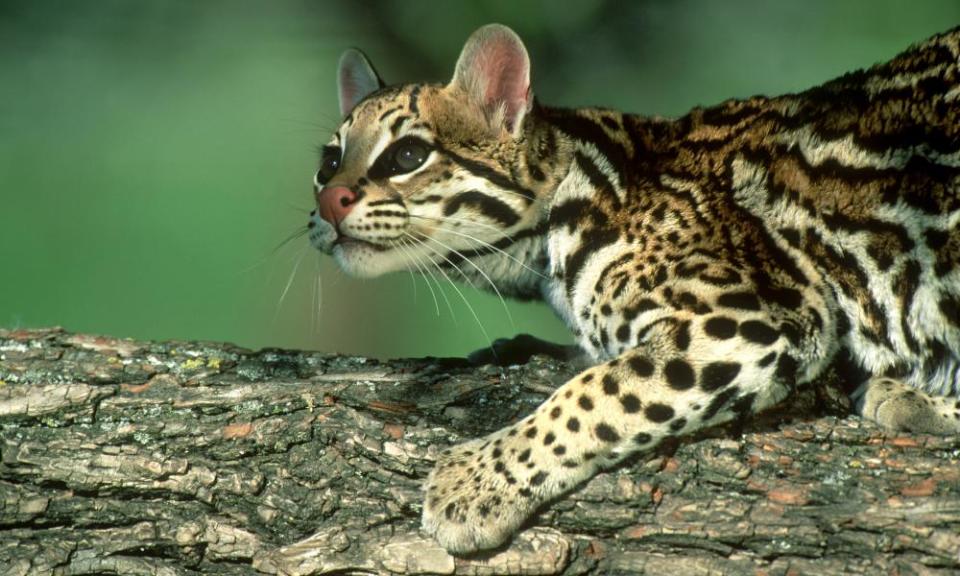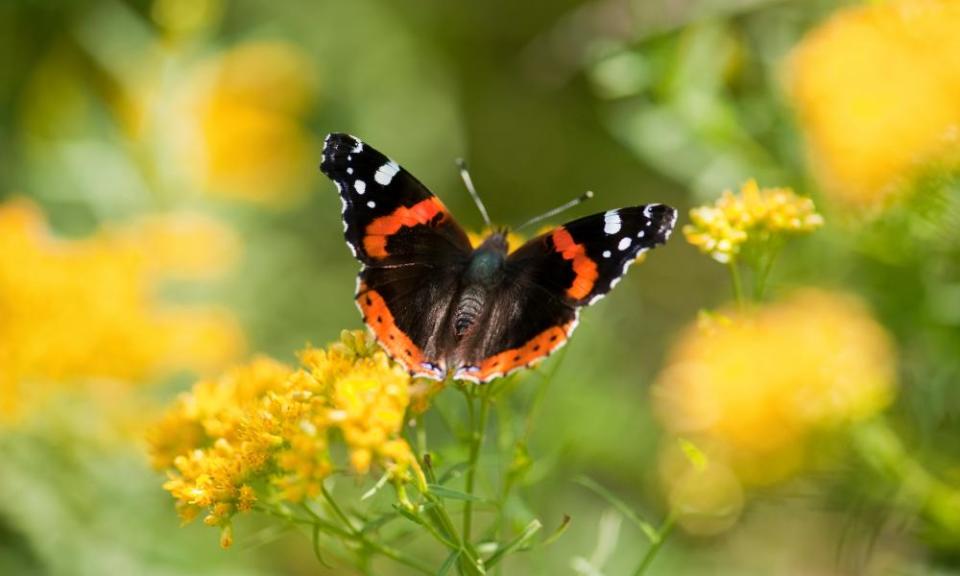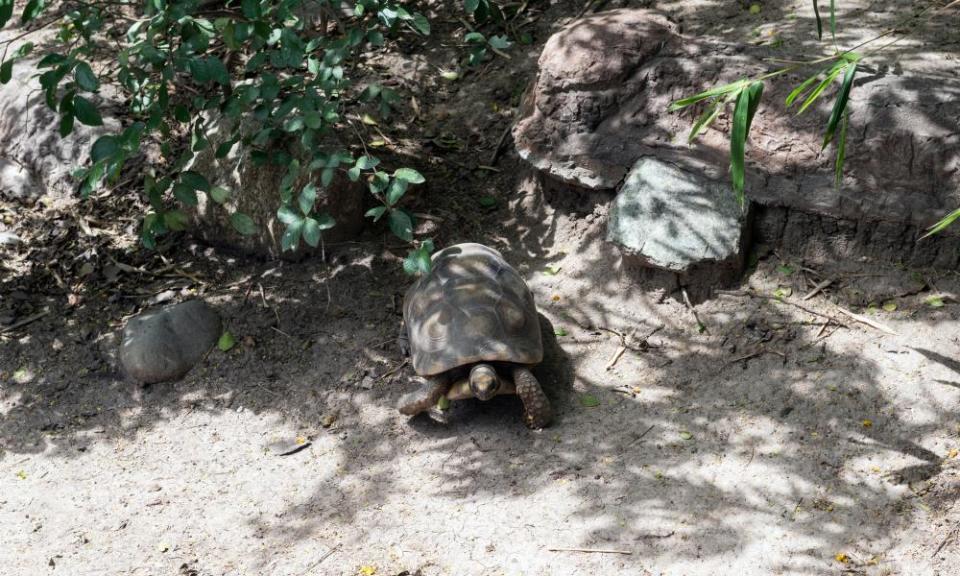Wildcats, butterflies, tortoises: all are endangered by Trump's border wall

Deep in Texas’s Rio Grande Valley, where half the US’s species of butterflies reside in a protected swath of green, Donald Trump’s wall may soon rise from an earthen levee.
The wall is designed to be a barricade to anyone who has crossed the nearby Rio Grande river from Mexico, with a concrete base topped by steel bollards rising 18 feet in the air as well as a 150ft-wide enforcement zone stripped of all vegetation.
Among those who will find it an impenetrable barricade are many of the area’s butterflies who do not fly high and will likely lose the plants they need to survive; the Texas tortoise; and the ocelot, a spotted wildcat whose population has dwindled to less than 100 in Texas. All could be separated from an environment essential to their existence. Some will be cut off from the river, which is a primary water source.
In fact, there appears to be just one species that will scale the proposed border wall with little trouble.
Humans.
“I’ve never talked to a border patrol agent off the record who thinks the wall is anything but irrelevant,” said Scott Nicol, the co-chair of the Sierra Club’s borderlands campaign, who regularly visits a section of existing wall several miles away and routinely finds ladders on the ground. “They say it takes someone about 20 seconds to get over the wall and then they run.”
The government, using decade-old legislation that suspends several laws to build a wall for security purposes, has targeted the Santa Ana national wildlife refuge to start wall construction – because it is on federal land and easy to access. For those fighting it, including the National Butterfly Center (whose land is privately owned about 30 miles from Santa Ana), one of their greatest concerns is how the government will try to make the wall appear foreboding.
Not only will the wall be impossible for most terrestrial animals to scale, but the enforcement zone will leave them exposed to predators, without plants and trees to hide beneath. Proposals also call for giant lights to be mounted on the wall, bathing the open zone in a brilliant blaze that could destroy environments.

Marianna Treviño-Wright, who runs the Butterfly Center, worries most about plants like the Tamaulipan kidney petal and the slender rush pea, which are essential for the survival of many butterfly species. Since most of the center’s 100 acres will be behind the wall, Treviño-Weight is concerned the plants could be wiped out during construction or will be inaccessible to the butterflies who need them.
“They have a co-dependent relationship with their host plants,” Treviño-Wright said. “Most of them stay low to look for their plants. When you put up an 18ft wall they are not gong to fly over it to look for their plants.
“(People) don’t realize the role of butterflies in pollination,” she continued. “Up to a third of every bite of food you eat is provided by a bee or butterfly. If you are concerned about global warming and climate change, you need butterflies. Without butterflies you have no plants which will filter the water. You will have dry-burn landscapes that will radiate the heat. It will lead to nothing short of a dune scenario.”
While the wall is supposed to have gates, Treviño-Wright worries that the gates will malfunction, as some have done on other parts of the wall. And even if the gates do work, they won’t be open all the time and most butterflies won’t know to use them.
An even bigger concern is where the wall will be located. Plans call for it to run across the levees built close to two miles inside the US from the river’s edge. This will preserve the Rio Grande’s natural floodplain but will also trap any animals on the river side of the wall when a flood comes. Unable to escape the rising waters, those animals – including the ocelot and the Texas tortoise – will be swept away.

In 2010, Hurricane Alex flooded the Rio Grande, filling the entire floodplain. In sections where the wall already existed, Nicol said, the floodwaters lingered for more than a month. When it finally receded, he said, hundreds of empty Texas tortoise shells were found. There were no signs of ocelots, rabbits and other animals that made the floodplain their home. They are assumed to have drowned and been swept away in the raging rapids.
“If you get caught in a flood with the wall, you will die,” he said.
And if the ocelots, Texas tortoises and butterflies die then the economy in many of Texas’s southernmost towns might die too. One of the area’s biggest industries is tourism, with visitors coming from all over the US to see the ocelots and butterflies as well as the dozens of types of birds who pass through on their southern migration.
“If you wall off the Butterfly Center and you wall off Santa Ana and you wall off habitats you will make it so people can’t get there,” Nicol said.
Which could severely affect the lives of that one species living in the Rio Grande Valley that actually can climb the wall, perhaps at the expense of those who can’t.

 Yahoo News
Yahoo News 